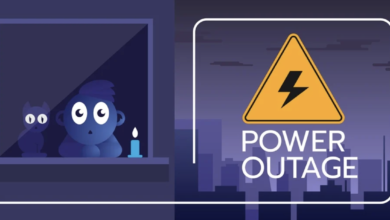
Something resembling a Hollywood blockbuster film, the story of Thabo Bester is something script writers can only imagine making up. The fugitive, who was on the run after faking his death to escape out of maximum prison, was finally caught by Tanzanian authorities.
On the 14 April 2023 Bester appeared at the Bloemfontein Magistrate’s Court to face the music… again! Here’s a breakdown of everything we know.
Thabo Bester: his early years and upbringing
There’s very little that we know of Bester’s upbringing and what can be confirmed. He was born to a mother of four, Maria Mabaso, at the Chris Hani Baragwanath Hospital on 13 June 1986. It has been noted that that she did not register him with the home affairs, and therefore does not exist on the database.
In fact, Mabaso herself only applied for a South African identity document in 2002, at the age of 37. Thabo was raised by his maternal grandmother, Johanna Bester, who has since died. But, later fled home by the time he was eligible to get his ID.
Facebook rapist gets life sentence
A streak of crimes gave him the moniker ‘Facebook rapist’ after he preyed on unsuspecting women using the social media platform. He would lure young girls to his home with the promise of international modelling opportunities, coerce them to sleep with him and rob them off their possession by threatening to stab them.
In 2011, he was found guilty of murder for stabbing his model girlfriend, Nomfundo Tyhulu to death and raping two other female models. He was sentenced to life imprisonment for these crimes in 2012.
Thabo Bester escapes from maximum prison
Sentenced to life, Thabo Bester was scheduled to spend his last days at the Mangaung Correctional Centre. The G4S-run establishment is a maximum prison, meant to house the worst of the worst criminals in the land.
The Mangaung prison, which is the second largest private prison in the world, is reported to be the headquarters that Thabo used to run his company, 21st Century Media. Under the alias Tom Motsepe, Bester arranged a ‘Women in Media’ conference in which he appeared via video call as he claimed he couldn’t be there in person due to being in New York.
Meanwhile, Thabo ran his operation behind bars, with the assistance of his girlfriend, Dr Nandipha Magudumana.
Thabo Bester and Dr Nandipha Magudumana relationship
The celebrity doctor helped Bester run his businesses while he was in prison and arranged his escape. It has been established that Magudumana roped in her father, Zolile Sekeleni, and former G4S supervisor Senohe Matsoara to assist in the escape.
It was revealed that Magudumana was responsible for sourcing three lifeless body that would be used for the elaborate escape. Cell 35 would later be burnt and Bester would be transported out the prison.11 months after he escaped from prison, he would be pictured in a Woolworths supermarket in Sandton. GroundUp reported the revelations to authorities who, in an attempt to save face, dragged their feet to solve the case. As we understand it, it was Mabaso’s DNA that was used to confirm if the burnt body was Bester’s remains. After the investigation proved that he was indeed alive, the manhunt ensued.
Thabo Bester flees the country
This couple makes Bonnie and Clyde seem like saints – and that’s not an exaggeration. Bester was able to flee the country with his girlfriend using several fake documentations. The duo managed to flee to Tanzania, where Bester was arrested with an American passport.
Magudumana is also believed to have assumed the identity of celebrity doctor, Mmereka Ntshani, better known as Dr Pashy. There are more developments expected to be revealed as the case continues. Bester had his request to speak denied by Magistrate Mohlolo Kgabisi while he seemed unfazed by the cameras in court




